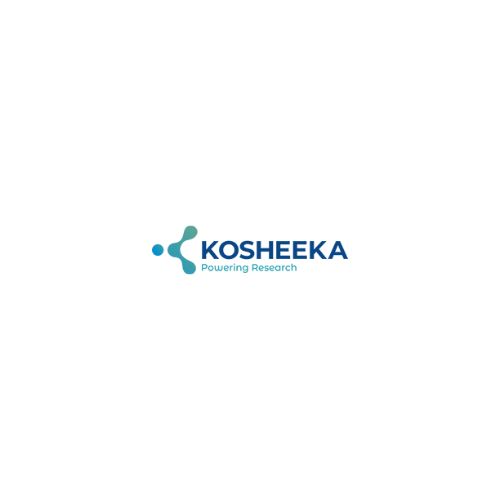
Kosheeka
Uploaded on Aug 12, 2024
Human Umbilical Cord-Derived Mesenchymal Stem Cells (hUC-MSCs) are a promising cell source for studying and using them in regenerative medicine. It is due to the fact that they are easy to collect, have a high proliferation rate, and exhibit immunomodulatory properties. These cells are isolated from the umbilical cord, which is collected during the birth of newborns. These cells exhibit multipotency, allowing differentiation into various cell types, including neurons and muscle cells. Key applications include: - Regenerative medicine for tissue repair - Treatment of autoimmune diseases - Addressing neurological disorders - Cardiovascular disease therapies While challenges like standardization and long-term safety require further research, the potential of hUC-MSCs in revolutionizing healthcare is immense. Learn more: https://www.kosheeka.com/use-of-human-umbilical-cord-derived-mesenchymal-stem-cells-in-research/
Human Umbilical Cord Derived Mesenchymal Stem Cells (hUC-MSCs)
HUMAN UMBILICAL CORD
DERIVED MESENCHYMAL
STEM CELLS (HUC-MSCS)
A Comprehensive Overview
of Sources, Characteristics,
Applications, and Challenges
Introduction to hUC-MSCs
• Mesenchymal stem cells (MSCs) are multipotent
stromal cells capable of differentiating into
various cell types, including osteoblasts,
chondrocytes, and adipocytes.
• Human umbilical cord-derived MSCs (hUC-MSCs)
are a specific type of MSCs isolated from the
Wharton's jelly of the umbilical cord.
• These cells are gaining significant attention due
to their non-invasive collection process, high
proliferation rate, and potent immunomodulatory
properties.
Source:
https://www.medsci.org/v20p1492.htm
Sources of hUC-MSCs
Wharton’s Jelly: The most common source, a
gelatinous substance within the umbilical
cord that provides a rich supply of MSCs.
Umbilical Cord Vein: Less commonly used
but also a viable source of MSCs.
Umbilical Cord Artery: Similar to the vein, it
provides another source, though less rich
than Wharton's jelly.
Advantages: The use of the umbilical cord
as a source of MSCs is non-controversial and
avoids the ethical issues associated with
embryonic stem cells.
Source: https://link.springer.com/article/10.1007/s12015-022-10493-
y
Characteristics of hUC-MSCs
Immunophenotype: hUC-MSCs express typical
MSC markers such as CD73, CD90, and CD105
while lacking hematopoietic markers like CD34
and CD45.
Differentiation Potential: These cells can
differentiate into mesodermal lineages including
osteocytes, adipocytes, and chondrocytes.
Immunomodulation: hUC-MSCs can modulate
immune responses, reducing inflammation and
promoting tissue repair.
Proliferation Rate: hUC-MSCs exhibit a higher
proliferation rate compared to bone marrow-
derived MSCs (BM-MSCs).
Source: https://www.researchgate.net/figure/Growth-and-biological-characteristics-
of-hUC-MSCs-A-hUC-MSC-growth-and-morphology-were_fig2_378905858
Isolation and Culture
Techniques
• Isolation Methods:
⚬ Enzymatic Digestion: Using enzymes like
collagenase to break down the tissue and release
MSCs.
⚬ Explant Culture: Small pieces of the umbilical cord
are cultured directly, and MSCs migrate out.
• Culture Conditions:
⚬ Media: Typically cultured in DMEM or α-MEM
supplemented with fetal bovine serum (FBS) or
human platelet lysate.
⚬ Expansion: hUC-MSCs are expanded under standard
conditions of 37°C with 5% CO2.
• Cryopreservation: MSCs can be stored in liquid nitrogen
for future therapeutic use without losing their Source: https://www.researchgate.net/figure/Growth-and-biological-characteristics-
of-hUC-MSCs-A-hUC-MSC-growth-and-morphology-were_fig2_378905858
characteristics.
Therapeutic Applications of
hUC-MSCs
• Regenerative Medicine: Used in tissue
engineering for cartilage, bone, and skin repair.
• Autoimmune Diseases: hUC-MSCs are explored
for treating conditions like multiple sclerosis,
rheumatoid arthritis, and Crohn's disease due to
their immunosuppressive capabilities.
• Neurological Disorders: Promising results in
treating conditions such as spinal cord injuries,
stroke, and neurodegenerative diseases like
Parkinson’s.
• Cardiovascular Diseases: Potential in treating
heart failure and myocardial infarction by
promoting angiogenesis and reducing fibrosis.
Source: https://www.researchgate.net/figure/Growth-and-biological-characteristics-
of-hUC-MSCs-A-hUC-MSC-growth-and-morphology-were_fig2_378905858
Advantages of hUC-MSCs
• Non-invasive Collection: Collection from the umbilical cord is non-invasive, painless, and poses
no risk to the donor.
• Higher Proliferation: hUC-MSCs proliferate faster than MSCs derived from bone marrow or
adipose tissue.
• Low Immunogenicity: These cells have a lower risk of immune rejection when used in allogeneic
transplantation.
• Ethical Considerations: Use of hUC-MSCs avoids the ethical issues related to embryonic stem
cells.
Challenges and Limitations
• Standardization: Lack of standardized protocols for isolation, culture, and application poses
challenges for consistent therapeutic outcomes.
• Tumorigenicity: Concerns about the potential for hUC-MSCs to promote tumor growth in
certain contexts.
• Long-term Effects: Limited understanding of the long-term effects of hUC-MSC-based
therapies.
• Regulatory Hurdles: Variability in regulatory approvals and guidelines across different
countries.
Future Directions in hUC-MSC Research
• Gene Editing: Integration of CRISPR/Cas9 for enhancing the therapeutic potential of hUC-
MSCs.
• Personalized Medicine: Developing patient-specific hUC-MSC therapies tailored to
individual genetic and disease profiles.
• Large-Scale Production: Optimizing bioreactor systems for scalable production of hUC-
MSCs.
• Clinical Trials: Ongoing and future trials to validate the efficacy and safety of hUC-MSC
therapies across a wider range of diseases.
Source: https://www.frontiersin.org/journals/immunology/articles/10.3389/fimmu.2022.1010399/full
THANK YOU!
+91-
9w6w5w4.3k2o1sh4e0e0ka.com
A-102, Sector-5 Noida-201301, India

Comments